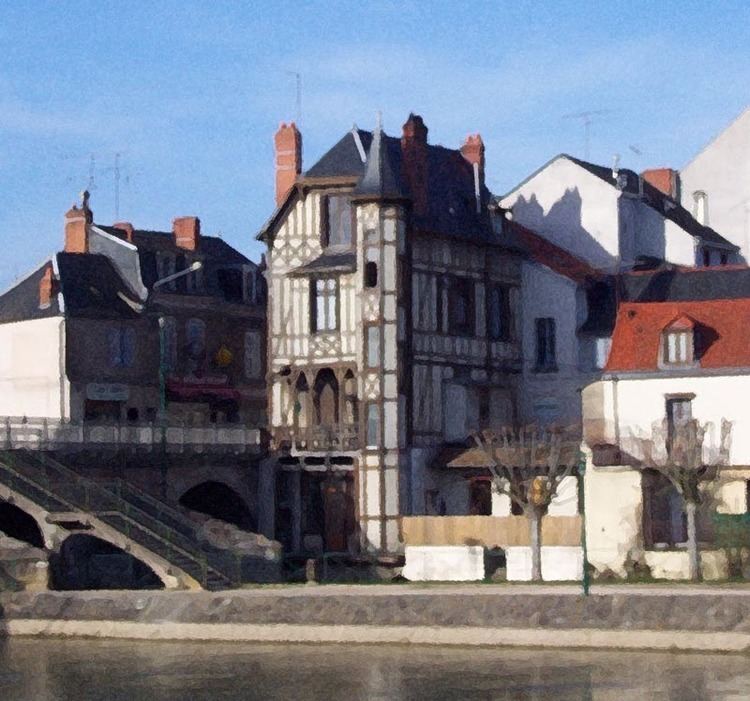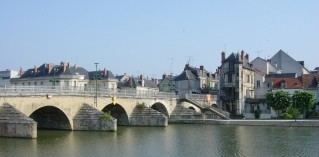Country Region | Area 39,715 Mayor Nicolas Sansu | |
 | ||
Map of Vierzon
Vierzon ([vjɛʁ.zɔ̃]) is a commune in the Cher department in the Centre-Val de Loire region of France.
Contents

Geography

A medium-sized town by the banks of the Cher River with some light industry and an area of forestry and farming to the north. It is situated some 33 kilometres (21 miles) northwest of Bourges, at the junction of the D2020, D2076 and the D918 roads.

Motorways encircle the town on three sides: the A85 and A71 on the north and east and the A20 on the north and west. Railways reached Vierzon in 1847 and a central SNCF hub, serving local and nation rail traffic, has been developed here ever since.
History
Little evidence remains of any pre-Roman occupation, and the Romans themselves didn’t leave much trace of their occupation. Not until 926, when a Benedictine monastery was built (on the site of the current Town Hall) are there any records. The monks came from the abbey of Deuvre, at Saint-Georges-sur-la-Prée, after the abbey was sacked by the Normans in 903. They brought with them the relics of St. Perpetua. These relics were again transferred to the church of Notre-Dame de Vierzon in 1807, where they remain today.
Also in the 10th century, the Normans built a castle atop a feudal motte. They became the seigneurs of Vierzon and the city developed within the western ramparts of the castle.
The Plantagenets, under Richard I Lionheart in 1196, and later Edward, the Black Prince, burned the town and took the castle. Bertrand du Guesclin drove the Plantagenets out in 1370 and restored Vierzon to the crown of France. It became a logistics centre for the armies of Joan of Arc.
Vierzon suffered during the wars of religion, but remained Catholic. The French Revolution of 1789 saw no major shocks except that the parish of Vierzon was divided into two communes: the urban part and the rural (Vierzon-Village), at the request of the rural inhabitants of the parish. In 1887, the part of town on the southern bank of the river was split into Vierzon-Bourgneuf. In 1937, following a public inquiry and a prefectoral decision, the four municipalities were united as one commune.
Vierzon has not been too troubled by more recent wars. In 1870-1871, a vanguard of Uhlan soldiers marched through the city but withdrew quickly. If Vierzon was spared by the First World War, it was sorely tried during World War II. The Cher river was the border that divided the city into two, the south of the city being in the "Free" French zone whilst the north was in the German-occupied area. In July 1944, a massive Allied bombardment destroyed a large portion of the city.
From the late 18th century until the middle of the twentieth century, the town became industrialised. Iron and steel farming tools were produced here, then glasswork and ceramics and later, agricultural machinery, notably tractors. With the demise of many factories in the town during the 1970s and 1980s, the unemployment rate was very high. This has since been reduced to the national average.
Sights
Personalities
Twin towns – Sister cities
Vierzon is twinned with:
